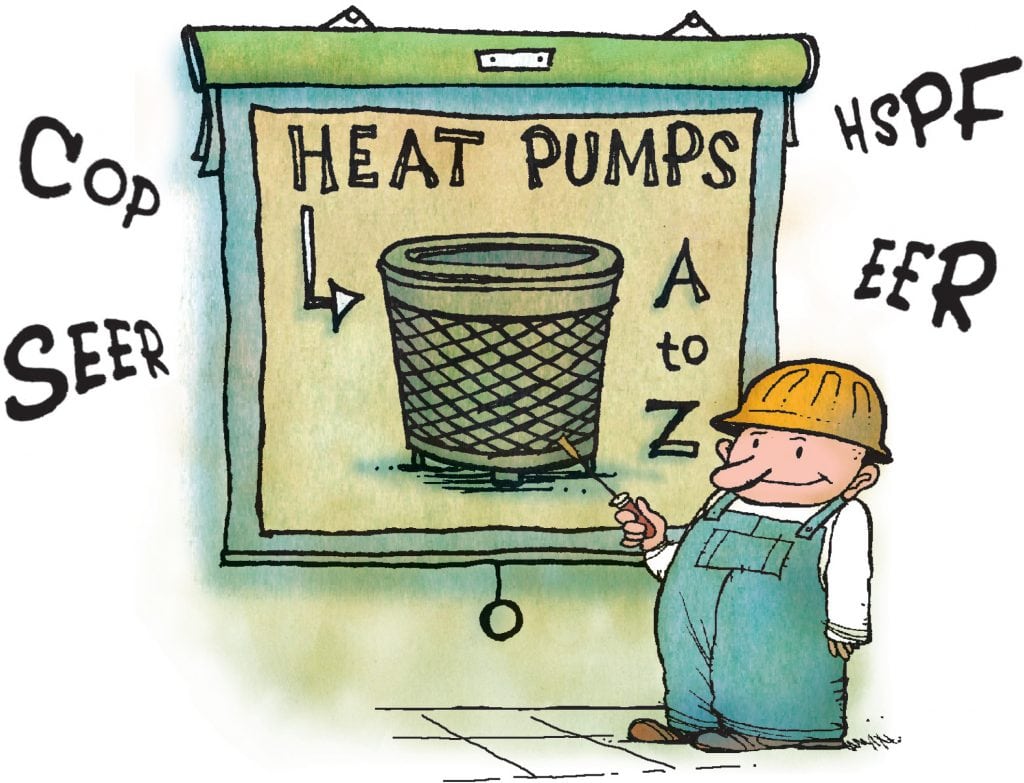Baffled by the alphabet soup that greets you when you start looking at heat pumps? If an HVAC contractor starts spouting numbers for SEER, EER, HSPF and COP, just remember those terms are a handy shorthand for comparing the efficiency of one heat pump to another. A higher number indicates a more efficient system. That can save you money in energy costs over the life of the unit, but you may have to pay a little more for it up front.
SEER: Seasonal Energy Efficiency Ratio. This rates the cooling efficiency of an air-source heat pump. To earn Energy Star certification, heat pumps must have a SEER of at least 15; mini-split SEER ratings can be in the 30s. You can buy less expensive, traditional models with a SEER of 13, the National Rural Electric Cooperative Association’s Brian Sloboda says. “The good news is, if you have an older unit, it’s probably rated below that, so the lowest amount you spend on a new unit will still save you money,” he says.
EER: Energy Efficiency Ratio. It’s not tied to seasonal performance but is a measure of cooling performance. You’ll find this on geothermal heat pumps, usually rated 18 and up.
HSPF: Heating Seasonal Performance Factor. The flip side of SEER, this rates an air-source heat pump’s heating efficiency. Look for a rating of 8.2 or above for Energy Star-certified models.
COP: Coefficient of Performance. If you’re shopping for geothermal systems, watch for this measure of heating efficiency, and aim for a rating of 3.6 or higher for more efficient models.



